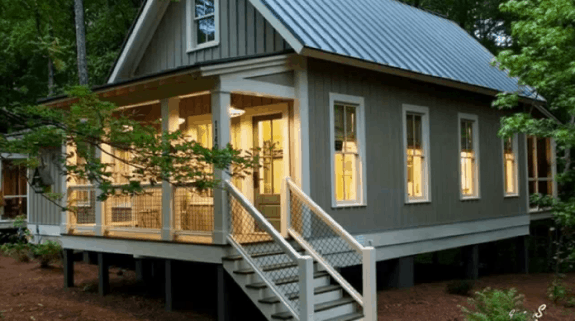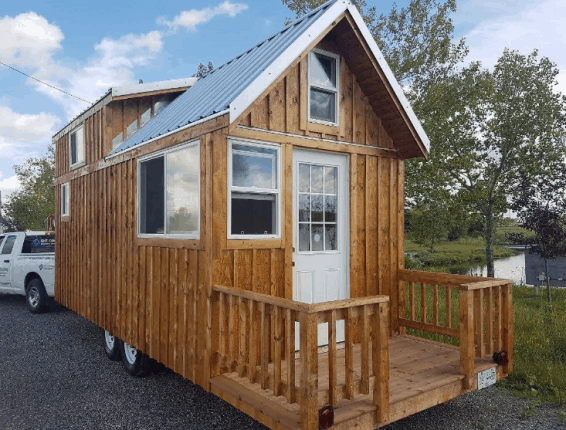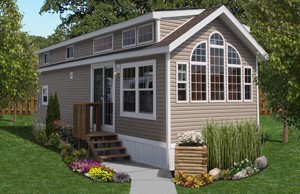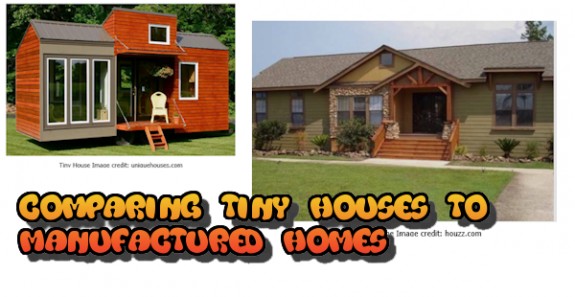
Although it’s still considered a small share of the market, the growing buzz around so-called “tiny homes,” has opened up a new market for insurance.
According to Insurance Journal, while enthusiasm does run high, so do the challenges and realities that the tiny home industry, and owners, face: building codes, zoning ordinances, community norms and, insurance issues.
“Some of the biggest issues involve building codes that have yet to be standardized and a variety of city and municipality zoning and ordinance regulations on where tiny homeowners can place their dwelling legally,” said Mike Schmidt, business development director for the Tiny Home Industry Association and CEO of Ensemble Ventures, a Colorado Springs business development firm.
As state and local governments struggle with, and have their own rules on, exactly how to classify tiny homes, there continues to be confusion over definitions between RVIA standards (Recreational Vehicle Industry Association) versus International Residential Codes (IRC), which lends to potential challenges around how to insure them.
“There’s been some crossover between the two and how you apply insurance to this market is very interesting,” said Schmidt.
“There are different types of tiny houses — how they are sited and built, how they are placed, whether they are on a trailer; a lot of things that are evolving and developing.”
Additionally, zoning codes and regulations that classify tiny homes as RV’s create an additional set of problems surrounding permanent residency.
“HUD basically mandates and specifies that you can’t live in an RV more than 30 days at a time in a fixed location which has really hampered the (tiny home) industry significantly,” said Schmidt.
“We’ve spent a lot of time looking at single family homes building, and development lags in the country. There’s a serious need for affordable housing and tiny houses may have a role to play if we can get some of the conflicting zoning and ordinances cleaned up.”
As Daily Business News readers are already aware, even though tiny homes may look more affordable on the surface, manufactured housing provides a significantly better value per square foot.

It appears that changes could be on the horizon, given a recent addendum to the IRC.
“The addendum provides architects, designers, builders, community developers and zoning officials a means of recognizing tiny houses as an official form of permissible dwelling,” said Thom Stanton of the Housing Development Institute.
The Insurance Industry
With code and zoning issues, the insurance industry has been slow to move. But one agent has decided to dive in and work to corner the market after meeting one of the earliest adopters of tiny homes.
“I met Dee Williams and she talked about the frustration of not being able to find insurance,” said Darrell Grenz, owner of the Darrell Grenz Insurance Agency in Portland, Oregon.
“I started going to some of her workshops to learn about the tiny home industry and then one of my clients built a tiny home.”

Then, Grenz was hooked.
“It was almost like destiny. My office, located in North Portland, has become a hotbed for the tiny home movement,” said Grenz.
But, Grenz ran into challenges as he started calling his carrier reps, as many said no to taking the risk. He finally got a big break, which involved Lloyd’s of London building a program to insure tiny homes.
Even with that success, there’s still concern about agents not having a full understanding of the market.
“The problem is that most insurance agents do not understand the differences on all these things (in tiny homes) and the tiny home movement, if it’s really a movement,” said Martin Burlingame, CEO of Colorado Springs-based Commercial Insurance Group.
“It’s a disaster for insurance because you have agents doing all kinds of crazy things.”
“The biggest problem when it comes to insurance is whether the tiny home is a permanent residence or a rental property. Many tiny home enthusiasts have taken to the Airbnb-style home venture.”
Even though Burlingame says that the market isn’t growing as fast as many would like, he sees the potential.
“How the industry evolves over the next few years will be interesting to watch. The evolution reminds him of another emerging market and product evolution: the legal marijuana industry,” said Burlingame.
Why Not Manufactured Homes vs. Tiny Houses?

Several manufactured housing professionals believe that those fascinated with tiny houses ought to be thinking manufactured homes instead.

“Anybody with a brain in their head would look at a manufactured home,” Brian Cira, president, Fairmont Homes, Nappanee, IN said.
“We do it much more efficiently, much more smartly. We’ve been doing this for decades. … We could build these [tiny houses] all day long.”
For a detailed comparison of tiny houses and manufactured homes, see the article, linked here. ##
(Image credits are as shown above.)

Submitted by RC Williams to the Daily Business News for MHProNews.

























